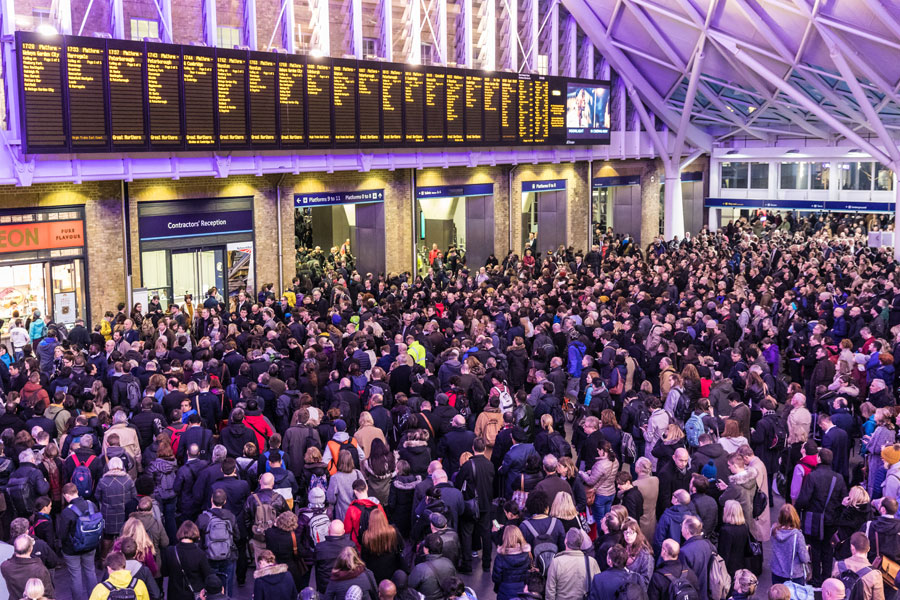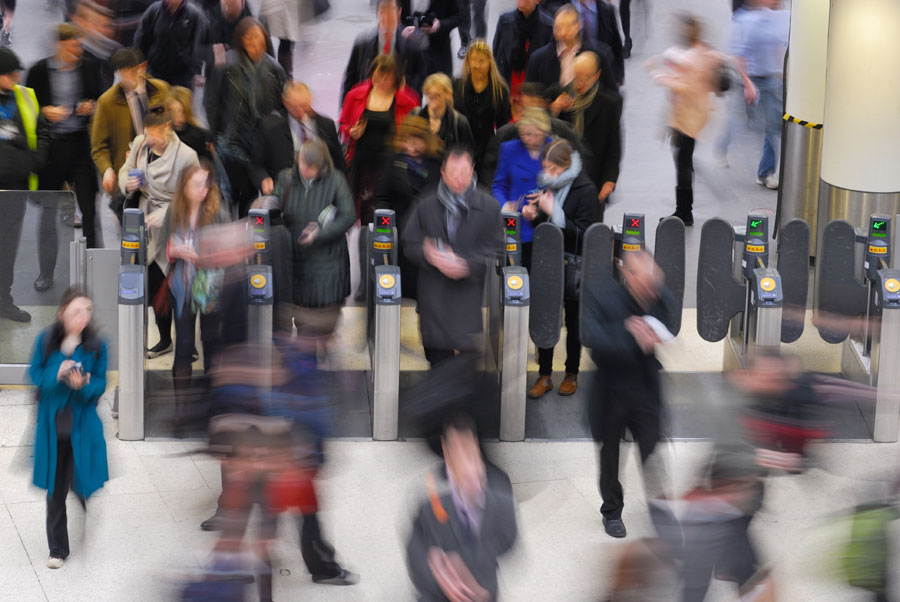Anticipating and Nudging MaaS Demand for more Sustainable Transport Choices
Dealing with fluctuating levels of demand is a constant challenge for the rail industry, as anyone who has sat (or tried to sit) in a packed-out train carriage will be only too aware. Indeed, overcrowded trains are the second most common cause of complaint among rail users, according to Office of Rail and Road statistics published in April, with only punctuality/reliability issues attracting more complaints.

Nearly all businesses and industries are subject to cyclical consumer behaviour, which is why demand management exists – to understand, anticipate, react to and (in theory) avoid or mitigate the negative effects of being excessively over or under capacity.
Successful demand management, however, goes beyond merely predicting levels of demand and developing strategies to deal with instances of high or low capacity. It can also be used to seek alternative ways of meeting customer needs, and even to ‘nudge’ the customer to behave in a way that is beneficial to both the individual passenger and the network as a whole.
For the rail industry, this might involve running an increased number of services in non-peak hours, moving away from the sharp division between peak and off-peak travel, or optimising seat occupation. A successful smoothing of demand would allow the network to be used more efficiently and give passengers the chance to travel more comfortably during peak-time, or at lower fares for those with greater flexibility.
In the past, this has often been a case of ‘easier said than done’, but a host of new technologies, the availability of new generation data and a gradual shift in our approach to mobility promises to give the rail sector much greater control over demand in the near future.
Digital, personal, adaptable
Other blogs in this series have already set out how the travelling public will benefit from New Mobility Services (NMS) and Mobility as a Service (MaaS) – the integrated, customer-focused transport system of the future. But these new approaches, and the technologies that underpin them, will also equip the rail industry with the tools it needs to really fine-tune demand management.
MaaS will enable passengers to choose from a full range of personal preferences – ranging from their preferred mode of transport to price sensitivities and accessibility requirements – which will then allow them to receive a shortlist of the most relevant transport options.
As explained in the previous blog on data’s untapped potential, this customer-generated data can be anonymised and combined with industry-generated data to track aggregated passenger movements and forecast congestion risks or identify other areas for improvement. Apps and other appropriate passenger information tools can then be built upon this information in order to better manage peak demand by, for example, encouraging users to take alternative routes or choose to start their journey later.
Fare enough?
In the past, fare structuring has been the most common way of influencing demand, with the dividing line between peak and off-peak travel the most obvious example of this approach. Cheaper deals for advanced ticket prices are another well-known method that has been successfully rolled out in recent years, and there have also been proposals to introduce ‘super peak’ and ‘shoulder peak’ rates to offer further incentives and disincentives to move people away from peak-time travel.

Pricing strategies are unlikely to provide the full solution, however. For one thing, price hikes are understandably unpopular and, if taken too far, they may also have the undesired effect of driving people off the rails and back into their cars. Demand shift based on changes in fare structures are also slow to bear fruit, with some estimates suggesting that it can take up to five years for a significant impact to be seen.
Thanks to its close alignment with passengers’ individual transport requirements, MaaS could provide a more intelligent and bespoke method of nudging people away from overcrowded trains. Real-time information about crowding levels on different services may be enough for a certain amount of traffic self-regulation.
If the lure of a less crowded carriage is not enough, how about other forms of incentive? Singapore’s Land Transport Authority (SLTA) conducted a behavioural experiment in 2012 which saw people being entered into cash prize competitions as a reward for shifting their commutes to off-peak. The trial succeeded in moving ten per cent of the commuting population away from the peak travel times, with a total of 17,500 rail users taking part in the trial. In another trial, SLTA enrolled big companies (BP, Ernst& Young, etc) to offer employees customised plans, flexible hours, and perks like breakfast discounts to encourage them to change their commuting patterns.
The bigger picture
As well as shifting more people away from peak-time travel, MaaS has the potential to also address ‘bigger picture’ socio-economic challenges. By providing rail companies with highly targeted and effective tools to influence demand for particular services, MaaS can be used to make the rail network more efficient, more accessible and (even) more environmentally friendly.
Taking the latter as an example, MaaS brokers could measure and communicate the environmental costs and benefits of every potential journey component (including across different modes of transport) and price them accordingly. Travellers could then choose – or be financially induced – to take the greenest option available to them.
Making it happen
Yet, for the full benefits of MaaS to be realised, there will have to be a rethink across the entire transport sector. Demand management in a MaaS framework requires greater flexibility in timetabling, ticketing and refunds than the current practice. Ticket prices will need to be allocated across transport modes and made available to customers via platforms that are operator agnostic. Risk will also need to be allocated and agreements reached on how to deal with and recover from disruption.

The successful realisation of MaaS will also rely on good communication. The travelling public will need to be able to easily interact with the new mobility software and apps. These new platforms will only be trusted by the public if they can communicate the relevant information clearly, reliably and accurately.
Reaping the rewards
Traditionally, there has been a temptation to view rail passengers as ‘captive demand’ whose travel constraints are immutable, and to consider that little can be done about their preferences and choices.
We think that the advent of NMS is an invitation to radically reform this view: to understand that demand management is not just about the ‘dry’ business of long-term transport planning; that it is in fact about creating a smarter and more flexible supply of products and services; and that there is something rail can do (and should do if it wants to stay competitive) about passenger preferences and choices.
MaaS will make it easier than ever for people to choose between different forms of transport. So long as the rail sector focuses on remaining attractive, this presents a huge opportunity – offering the potential to not only increase the demand for rail travel, but also providing the tools to successfully manage that demand.
Next week, Sharon Odetunde, RSSB’s Head of Academic Partnerships, Katrina Dann, Student Research Analyst, and Steve Close, Senior Technologist at CPC, will discuss the future of customer experience in the MaaS era.

